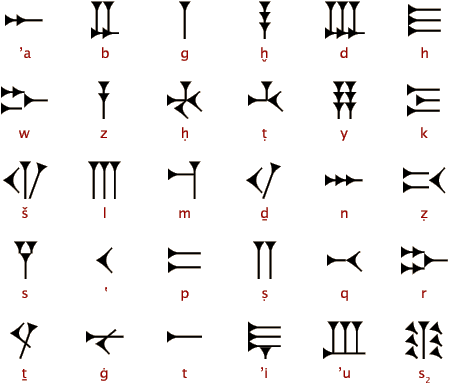Learning our Alep, Bet, Gimels
New research has uncovered the origins of the English alphabet. It was first developed in the city of Ugarit, in what is now Syria, over 3000 years ago. Ugarit was a port and as such had trading relations with much of the Mediterranean including Egypt and Cyprus. Ugarit flourished roughly between 1450BC until its destruction in 1250BC.
It was the trading relationships with other countries that undoubtedly helped the development of the language, and excavations near the modern town of Ras Shamra have uncovered thousands of clay tablets with inscriptions in this ancient language.
It was the scribes of Ugarit who first developed the alphabet using a cuneiform script on clay tablets. There is scholarly debate on whether the Ugaritic or Phoenician alphabet came first but what is clear is that they both had the A, B, C, D letter order. The Greeks and later the Romans subsequently “borrowed” and developed the alphabet into the system we know today in Western Europe.
Clay tablets reveal that in addition to correspondence, treaties and laws, there was a considerable body of literature written, some of which influenced later Hebraic or biblical writings. These help researchers piece together the development of ancient civilisations and their languages.
So what happened to the Ugaritic civilisation? Their power and influence was based not on military force but on trade and contact with other countries in the Mediterranean. In the middle of the 12th century BC, the invasion of the mysterious Sea Peoples from the west brought about the collapse of this palace-temple economy.
But their influence lives on today in our A, B, and C.
Ugaritic isn’t on our list, but find out which languages are
Tap into a world of new clients with our translation services




